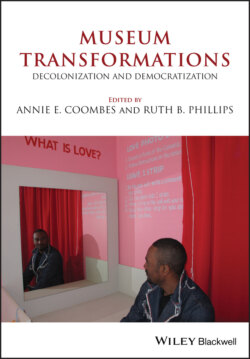Читать книгу Museum Transformations - Группа авторов - Страница 19
Difficult histories
ОглавлениеA number of key political transformations and their recent anniversaries (the end of apartheid in South Africa; the commemoration of the Civil War and the retirada in Spain; the abolition of the Atlantic slave trade; the Canadian and Australian governments’ apologies for their abusive residential school system and forced removal policy for Aboriginal children; together with a series of brutal civil wars (Rwanda, Libya, Sudan, Serbia, and Syria)) have provoked a spate of commemorative initiatives including museums which claim to forge a path through the turmoil of memories left in their wake. In important ways, public history and its institutions have sought to tackle violent pasts where perpetrators and victims (rarely as clearly distinguishable as those labels suggest) are daily confronted with each other’s presence on the streets of their hometowns. For survivors of these tragic histories in Phnom Penh or on the streets of Kigali, Londonderry, Johannesburg, or Madrid, simply walking down the road may provoke a sudden collapse or terror generated by the insecurity of never being certain about the past of one’s interlocutor. Jens Andermann’s chapter (8) compares the implications of the different juridical and political contexts of two recent memorial museums in Latin America in Argentina (the Museo de la Memoria) and Chile (Museo de la Memoria y los Derechos Humanos). Often the decision to create a museum has followed public inquiries such as the South African Truth and Reconciliation Commission. The task is inevitably daunting for any institution attempting to expose a history of political motives and their violent consequences that aims both to promote understanding for a broad public who may not have been directly involved and to foster reconciliation between the main protagonists. Another problem raised by the increase in museums dedicated to difficult histories is that they often focus only on large-scale atrocities that can be categorized as massacres or genocides. Accounts of the day-to-day forms of degradation and brutalization inflicted on individuals by oppressive regimes are left out. In the absence of acknowledgment of the effects of political repression in the domestic sphere of family life, women’s experience is often seen as secondary in these revisionist histories. In representing difficult histories, as in more standard historical narratives, questions arise over the valorization of certain kinds of experience over others and the kinds of narratives that can legitimately be included in the museum.
While it has clearly been crucial that difficult histories be acknowledged and exposed to public scrutiny, this museological trend has also spawned the institutionalization of new comparative areas of museum studies such as dark tourism and genocide.13 These are moral and ethical minefields. Inevitably, individuals speak on behalf of constituencies who are not there to speak for themselves. The reliance on ocularcentric narrative devices can tempt the museum to produce a visually stimulating account that may simply end up exposing victims to a form of epistemic violence. Similarly, attempts to recreate somatic experiences for visitors through immersive reconstructions of slave ships or gas chambers usually fail to produce an understanding of the relationship between the historical horrors that are being recalled and contemporary manifestations of slavery or genocide. Thus the constant refrain of “never again” reiterated at the exits of the Holocaust Memorial Museums in Washington and Los Angeles or in the Apartheid Museum in Johannesburg rarely elicits the kind of call to arms which might make such exhibitions unnecessary in the future. But where emphasis has been placed on making the museum serve more as a meeting place that facilitates dialogue and less as the site of a spectacle to be consumed, community groups and human rights organizations have cooperated in turning it into an arena for social action and change. In some instances sites associated with violent political histories have been transformed into the headquarters of organizations committed to the highest ideals of new dispensations, and have become symbolic of their aspirations. Thus the Gender Equality Commission’s offices and the offices of the Forum for the Empowerment of Women (FEW) are now literally part of the built fabric of the site of the Women’s Jail in Johannesburg in its reincarnation as a heritage site museum, the subject of Annie Coombes’s chapter (9) in this volume.
